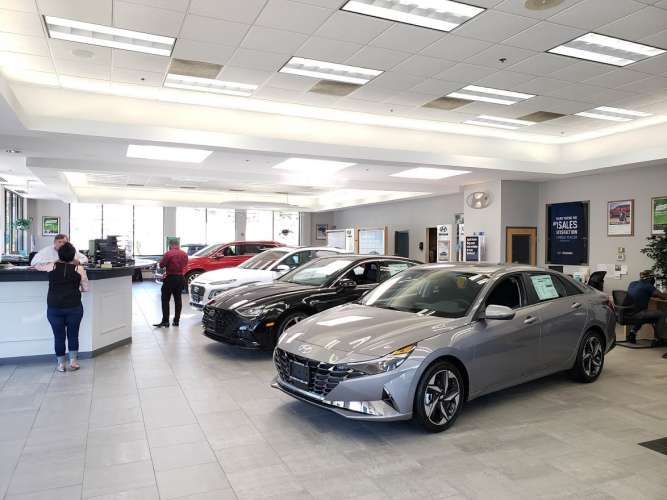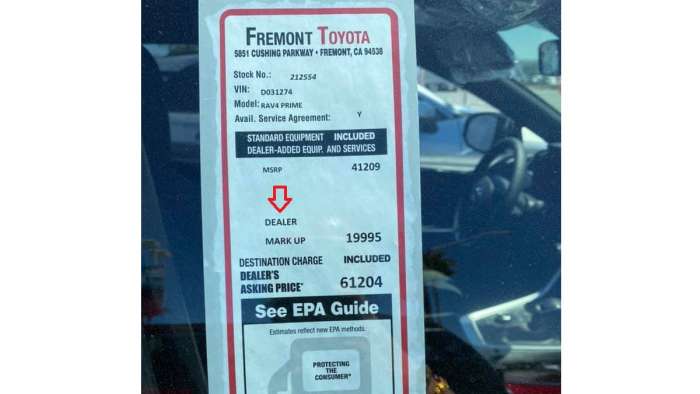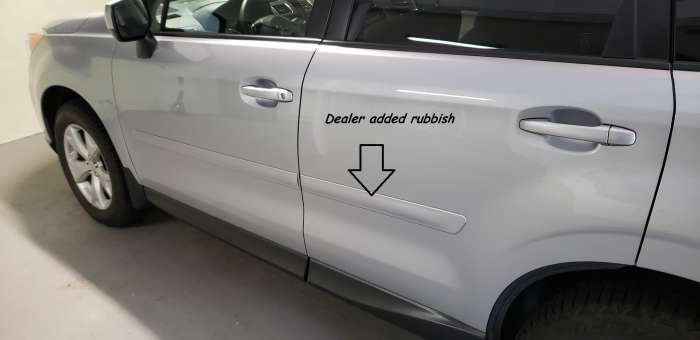If you’ve shopped for a new car recently or scanned the news on new car prices, you are likely experiencing a bit of sticker shock. Or disgust. Or anger. All of these are normal emotions to feel when the economic situation changes from one of relative stability to one of instability. It sure seems like the instability always makes things much more expensive, rather than the opposite.
There isn’t just one reason why car prices are surging and will continue to surge. There isn’t one entity at fault. Not one person to blame. There isn’t one political party at fault. It isn’t just the war in Eastern Europe. It isn’t just COVID. Semiconductor shortages are certainly not the sole cause. Let’s look at what is happening to car prices with an aim towards understanding why the buy-price of a new car is so much higher than we remember.

We Normally Shop For Cars Every Five to Ten Years On Average
If you are an American who purchases new cars, think about how often you do so. Statistics are tricky because many people don’t own just one car, or they reside with others who they share the shopping experience with. A spouse or another family member. Even if you keep cars you buy ten years or more, you may buy cars more frequently. Let’s use five years as our guide.
Inflation Effect On MSRP
If you shopped for a new car with a “Sticker Price” of $30K five years ago, expect the price today will be roughly $36K. This is due entirely to the eroding value of the U.S. dollar. In America, our political process has devolved into one of spend and borrow. We run deficits on our federal budget every year and have done for many decades. Only in very unusual circumstances has this not been true. One exception that comes to mind is a brief period during the run-up to the dot-com bubble burst when businesses were paying big taxes on gains about to evaporate. Other than that, we spend more each year than we tax ourselves.
This destroys the value of our currency. In the past five years, this basic policy of borrowing to get what we want now, rather than pay for it as we go, has slashed the value of the dollar by 20%. Thus, a car that had a sticker price of $30K in 2017 will now have a sticker price of about $36K. If you want to blame someone for this policy, it is a circular firing squad. We all have the chance to vote to stop runaway spending, and we pretty much all opt not to.

MSRP Is A Reference Point, Not a Price Point
One reason shoppers today feel like prices are higher is the MSRP flim-flam. We all pretend that the manufacturer’s suggested retail price (MSRP) has some firm guidance on the cost to buy a vehicle. Yet, in our hearts, we know it does not.
I was employed by a truck publication for about five years. During that time, a regular part of my work was to report the discounts being offered by various truck brands. $10,000 off of the sticker price before negotiations even began was common. Nobody complained.
Today, vehicles are, for the most part, selling above MSRP, and people are losing their minds and feeling ripped off. Good for them! A little outrage is good for keeping prices in check. Due to scarcity, many brands' dealers routinely mark up a vehicle’s MSRP by many thousands of dollars because they can. Cars are in short supply. If you want one, pay up. When cars were abundant, nobody cried about a dealer putting $10K cash on the dash to entice you to buy.
Take Our Quiz: Can You Guess Which Two Vehicles Have the Highest Markups Today? Click To See the Answer
Loopholes In Vehicle Pricing
In addition to marking vehicles up just because they can, manufacturers and dealers are taking advantage of the laws that govern vehicle pricing and how prices are advertised. There are consumer protection laws in America that protect car shoppers from false advertisement. However, car makers and dealers carved out a few nifty loopholes. They cost you thousands on every new car purchase.
The first is “Destination and Delivery.” Now a fee that can cost up to $2,000, this is a fee that automakers and dealers team up to impose on you above the MSRP. It has no rhyme or reason. No, there is no law saying, “They have to charge you.” Any automaker could stop charging destination and delivery fees tomorrow if they chose. They won’t because it is a huge part of their profits (if any), or helps reduce their losses.
Tesla imposes this fee. Even on shoppers who pick their car up at the factory or have it delivered in the same town in which the vehicle is built. Hey, while we are on the topic of Tesla, have you noticed the $250 Order fee? Read more about it at Elektrek's spotlight: Tesla More Than Doubles Its Non-Refundable Order Fee.
In addition to destination, delivery, and ordering fees, dealers routinely mark up vehicle prices with a documentation fee of up to many hundreds of dollars.
All of these three fees, destination and delivery, order fees, and documentation fees, add as much as 20% to the price of a new car. That $36K vehicle you expected to pay $30K for is now over $38K.

Dealer Added Rubbish
Another shell game played by manufacturers and dealers is the dealer-added rubbish markup. Here’s how this game is played; You find the model and trim you like, and it comes out to $36K on the button. However, you are not allowed to purchase that, despite it being advertised on the dealer’s website Instead, you are forced to buy that model and trim with added stuff of dubious value. These include:
Moonroof air deflectors
Body side molding
Paint sealant
Interior protection
Dealers and automakers know you don't want to be forced to buy this junk. So they have a quick response when you ask why you are forced to do so. They say, "Oh, sorry. Nothing we can do about that it's added at the port." Nothing instills less confidence in a vehicle accessory's longevity than hearing it was installed "At the port."
Let’s Do Some Math To Find Your Price For A New “$30,000 Car”
If you last shopped for a “$30K car” and were expecting the prices you see to be near that for the same model today, here is how your sticker shock rolls up to a new price you won’t believe:
$30K Plus 20% Inflation = $36K
Add Destination and Delivery Fees of $1,295 = $37,295
Add Dealer Markup $3,000 = $39,295
Dealer Added Rubbish $1,400 = $40,695
Add Dealer Doc Fees of $395 = $41,090
The above chart shows how the car you figured would cost you around $30,000 based on your last purchase may now cost you well over $40,000. Notice that none of the added costs were actually the manufacturer incurring a higher price for materials growing more scarce, mandated electrification, or for added safety equipment. All of which drive up costs for automobiles every year. Somehow, manufacturers are able to offset those very effectively.
Bonus! Your Lousy Deal Enabled A Special Member Of Society To Get A Great Deal
If you are not a recent college graduate, veteran, teacher, first responder, healthcare worker, friend or family member of an employee of the manufacturer, or in some other coveted special interest group, you will pay more for your vehicle so that they can get a lower price than you pay. The truth is, prices are not the same for all of us. Just like solar rebates are paid for by other electricity customers, lower car prices for special people are paid for by the rest of the shoppers.
Every major brand offers lower pricing incentives to members of society we deem special. This should not be news if you are an American. We just reduced the student loan debt of millions of college grads while giving nothing to the people who clean clogged drains. Who deserves that largess more? Answer the next time your toilet won't flush.
If you are shopping today for a new vehicle and have not purchased new in five years or so, expect a car that you paid around $30K for in 2017 to cost you around $41K today. And if you are looking for the single culprit, let us know if you find her.
Top of page image by John Goreham. Image of dealer added rubbish by John Goreham. Image of dealership by John Goreham. Dealer markup image courtesy of Sarah Jane.
John Goreham is a long-time New England Motor Press Association member and recovering engineer. John's interest in EVs goes back to 1990 when he designed the thermal control system for an EV battery as part of an academic team. After earning his mechanical engineering degree, John completed a marketing program at Northeastern University and worked with automotive component manufacturers, in the semiconductor industry, and in biotech. In addition to Torque News, John's work has appeared in print in dozens of American news outlets and he provides reviews to many vehicle shopping sites. You can follow John on TikTok @ToknCars, on Twitter, and view his credentials at Linkedin
Re-Publication. If you wish to re-use this content, please contact Torque News for terms and conditions.












